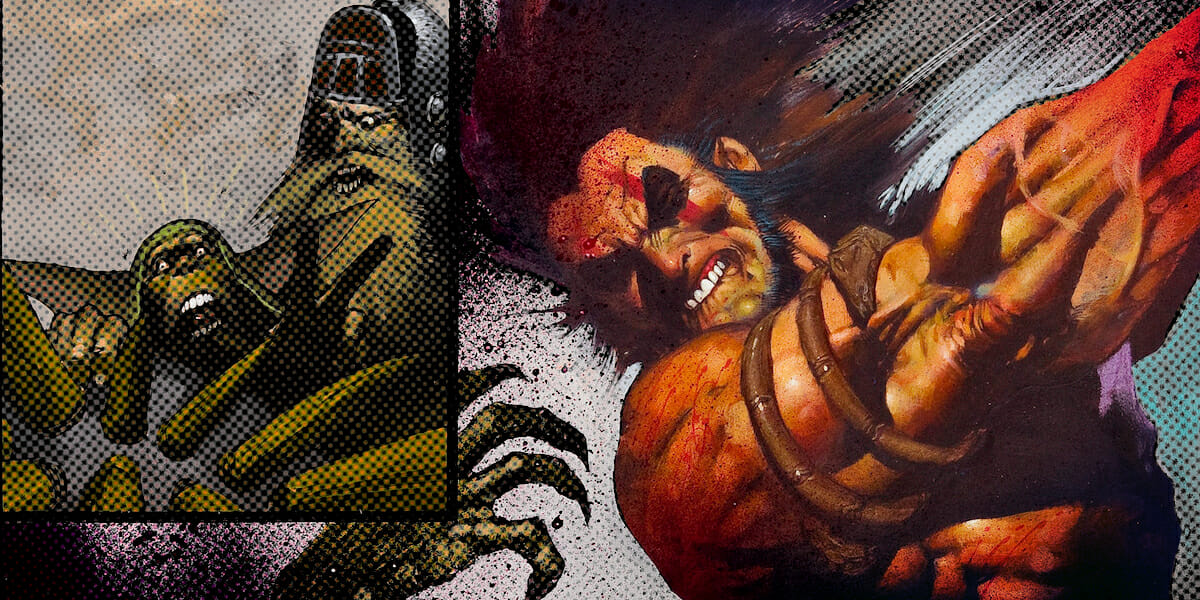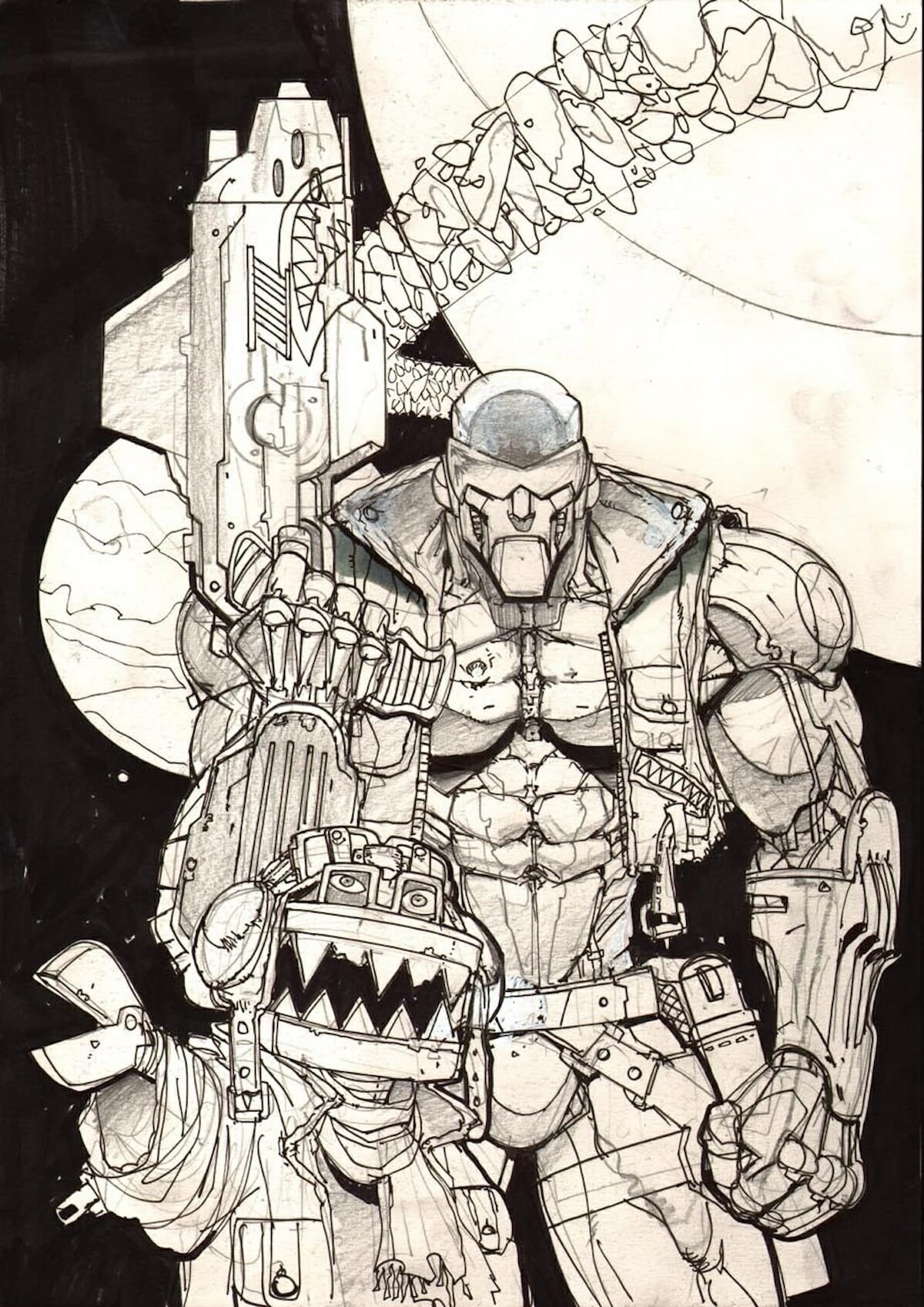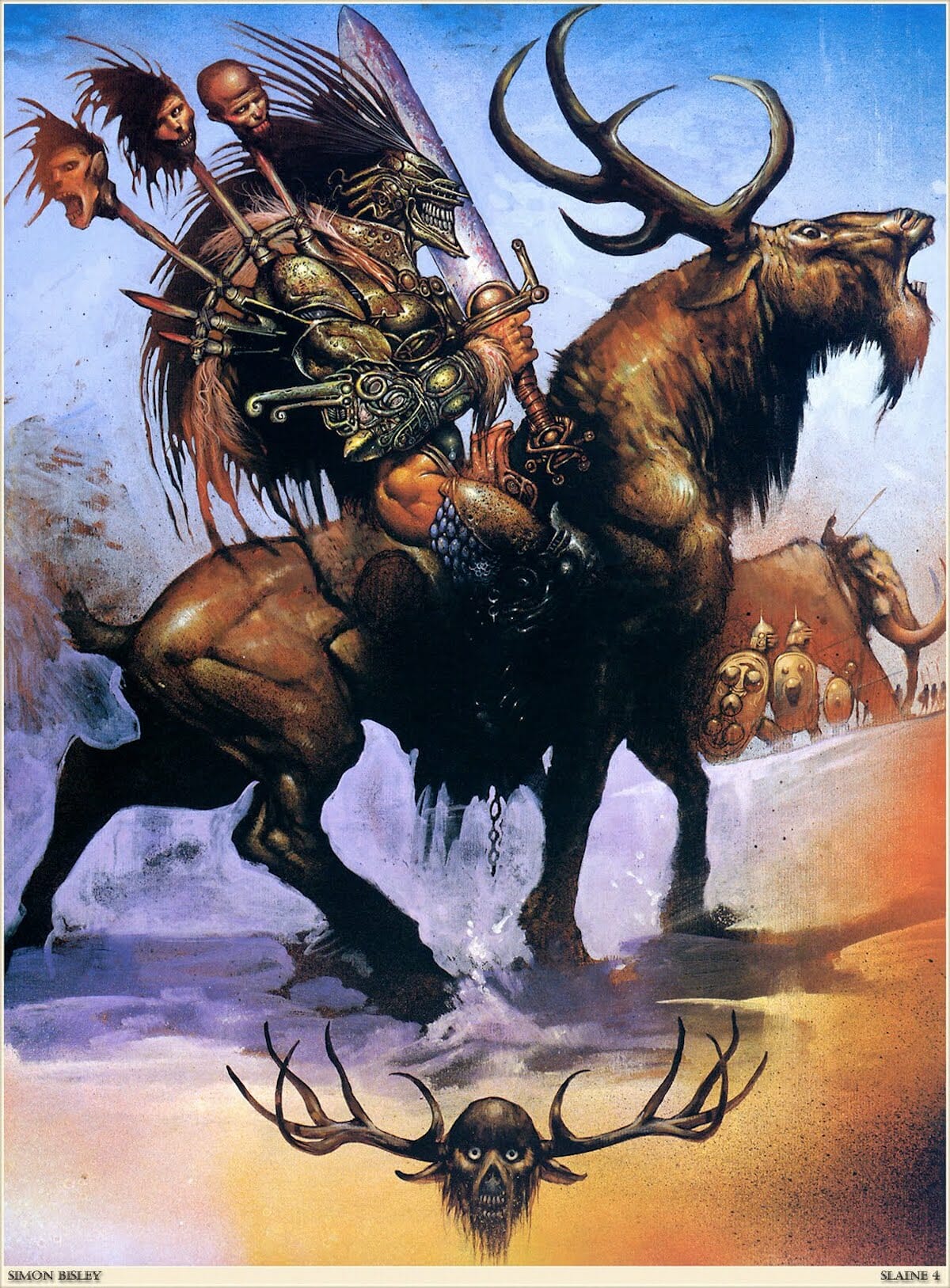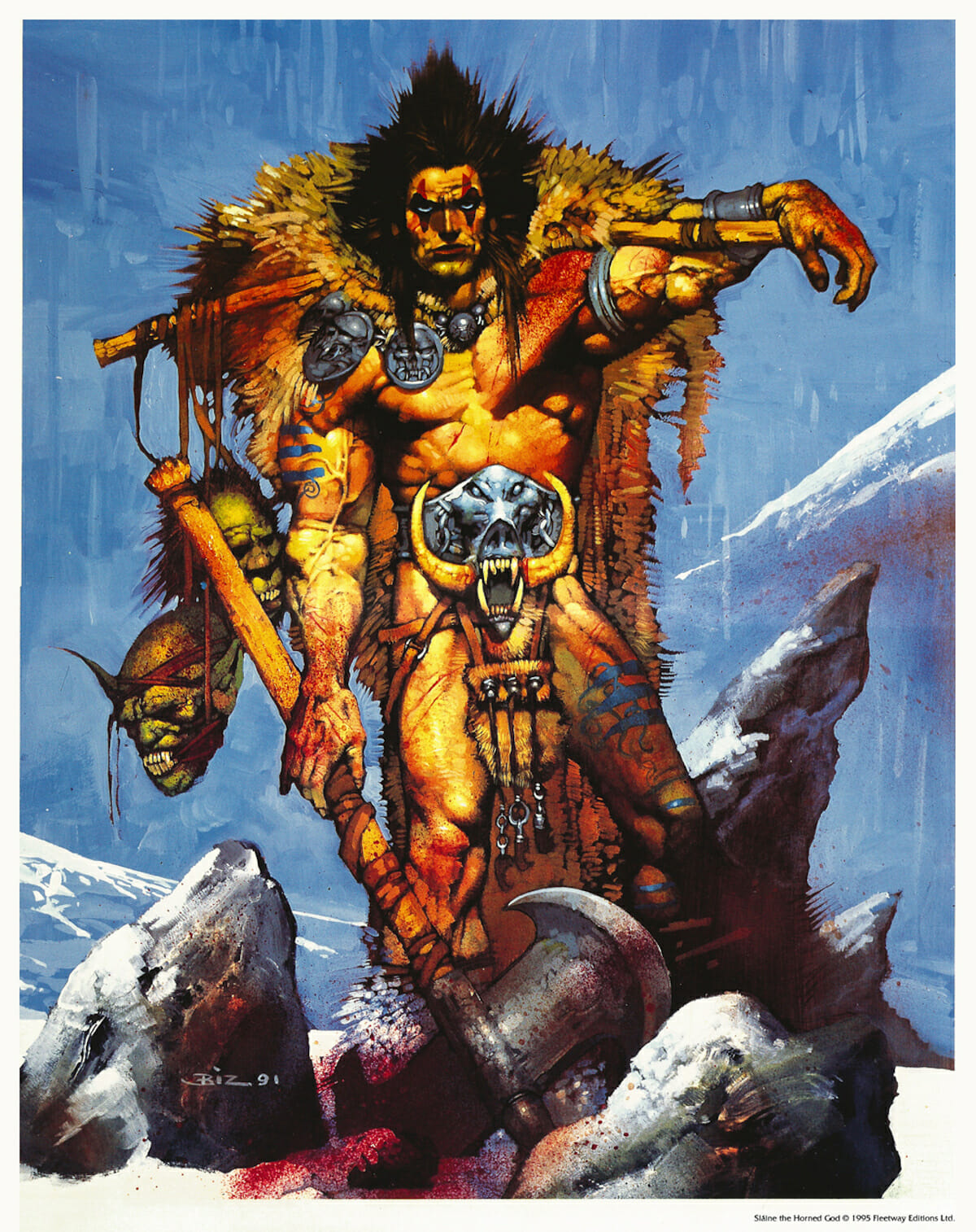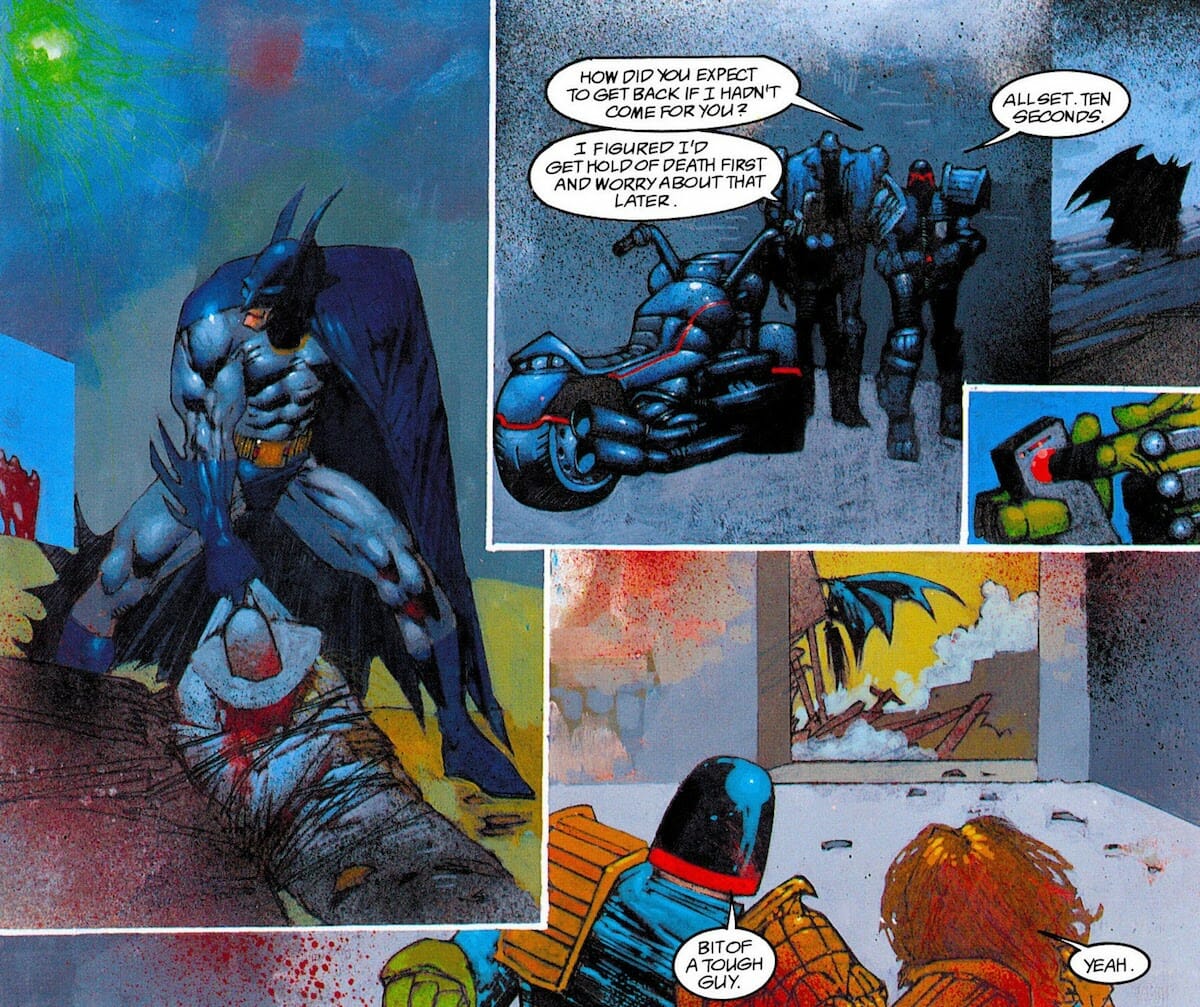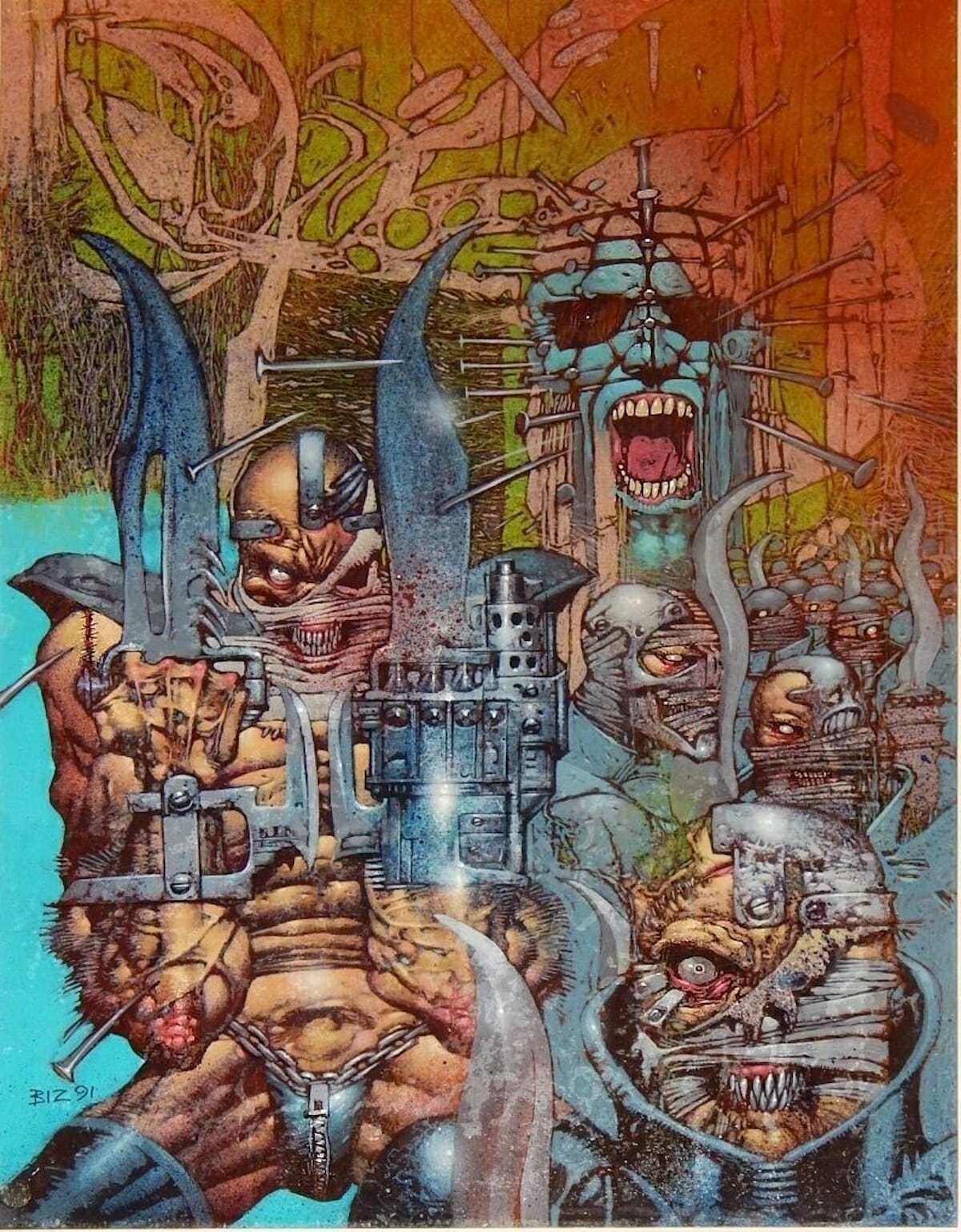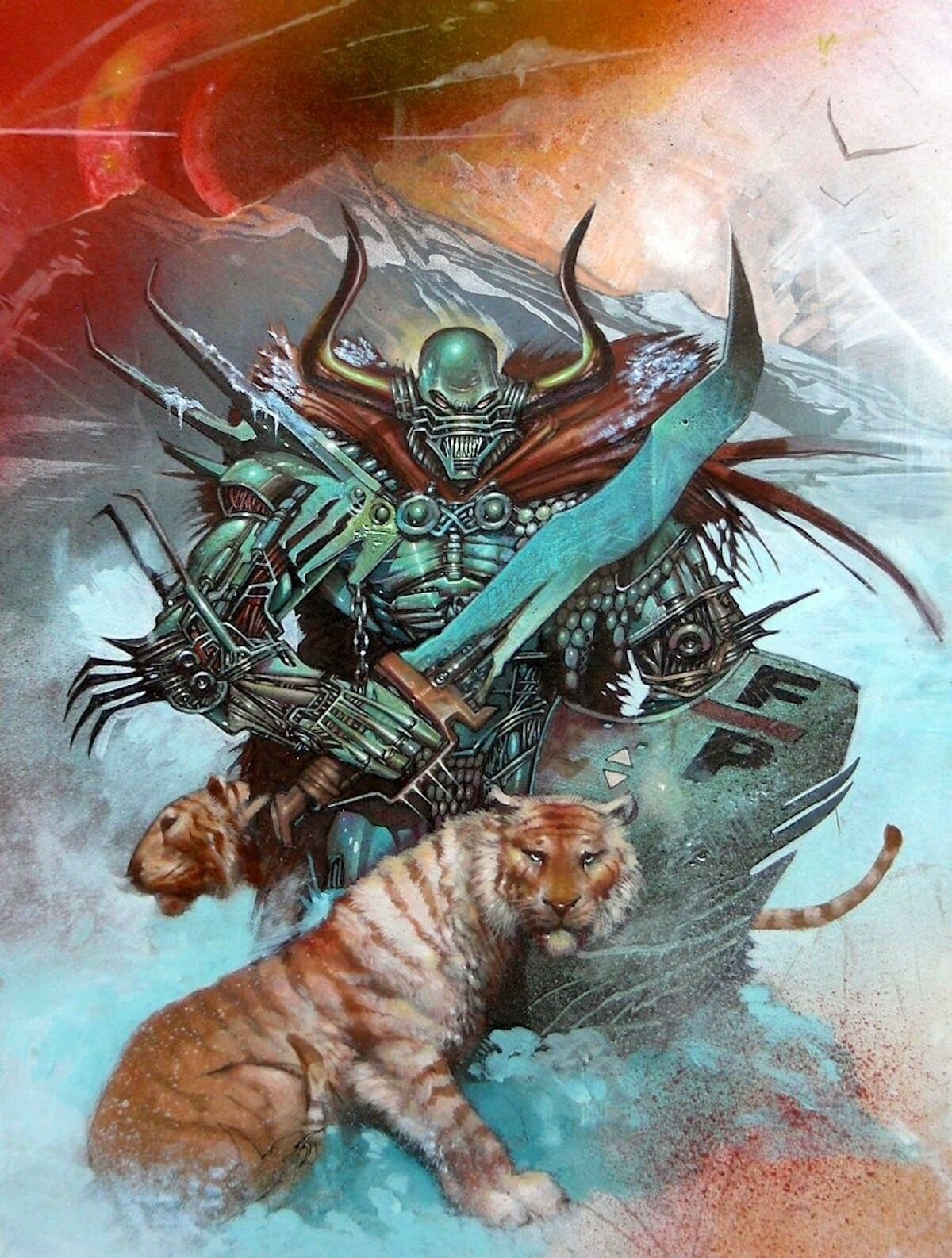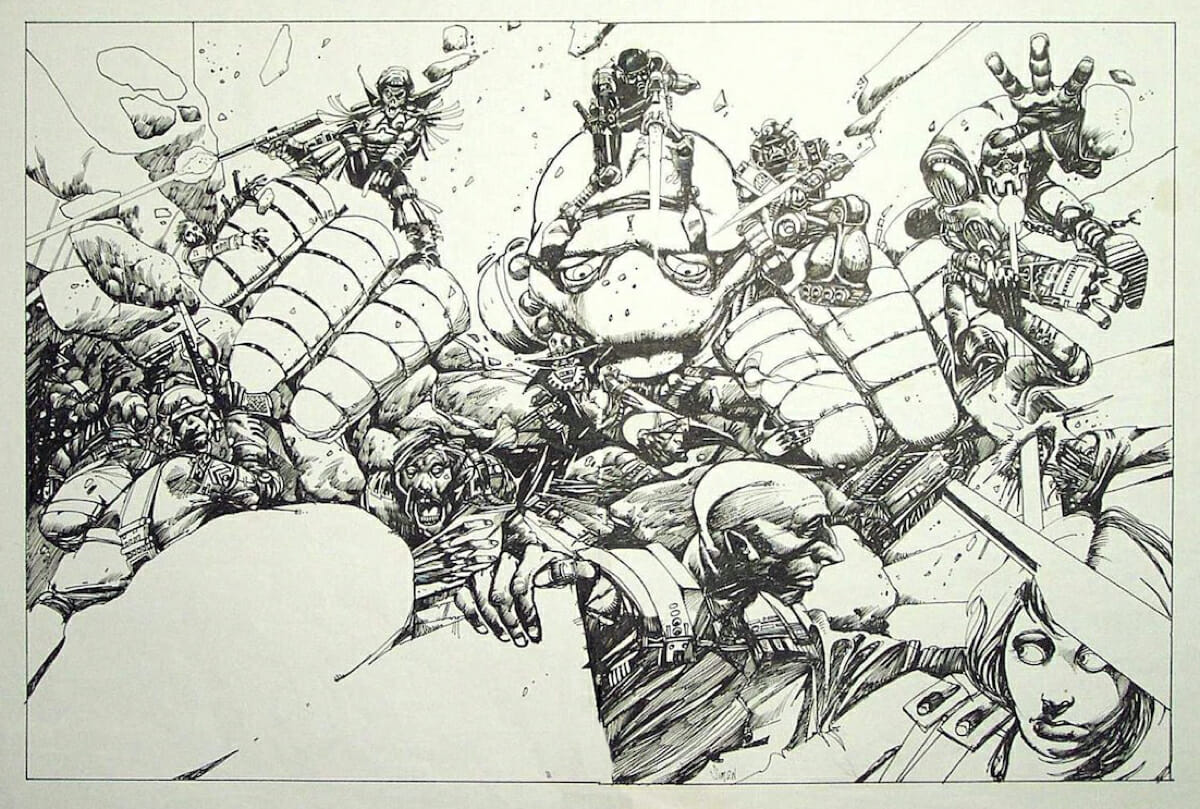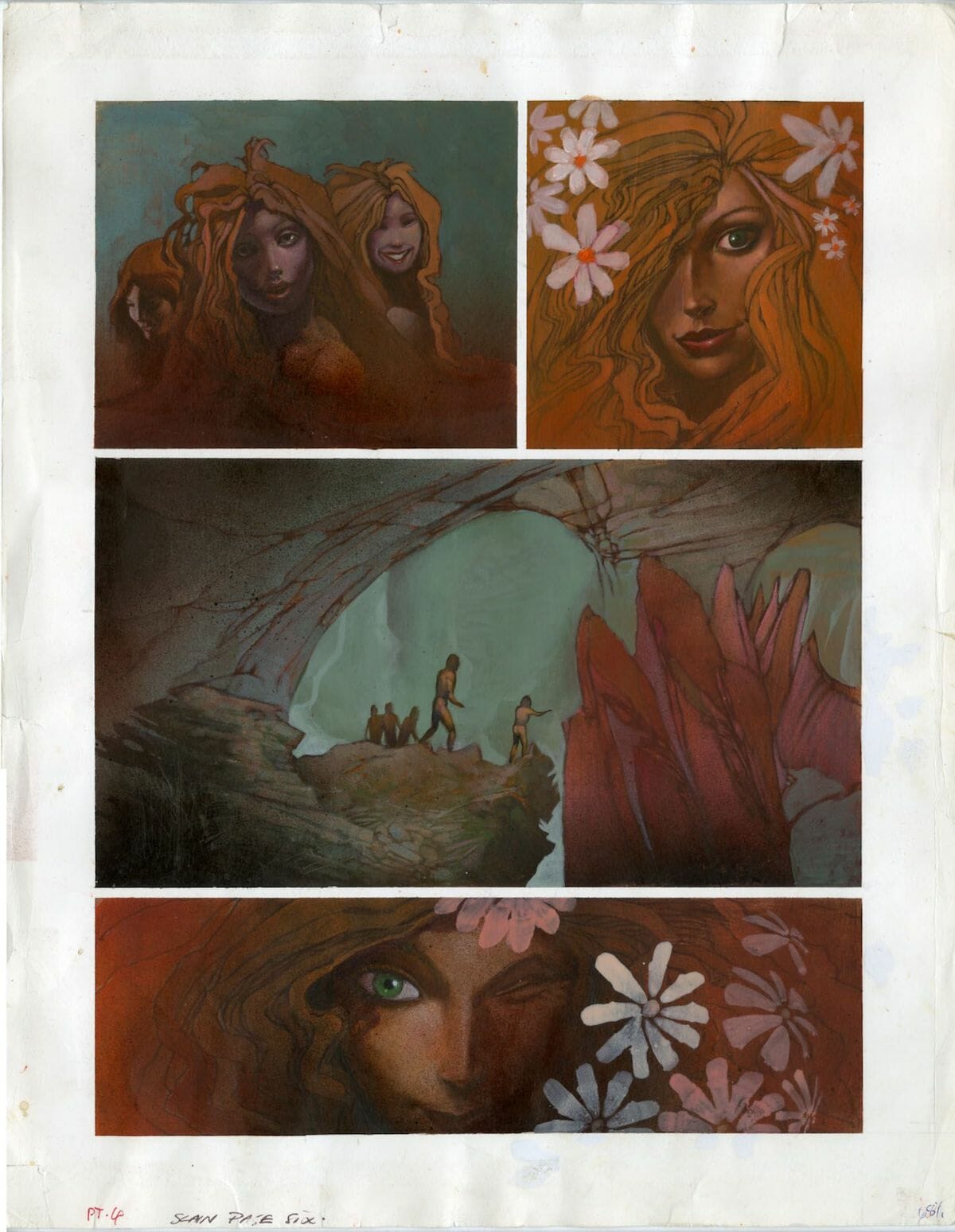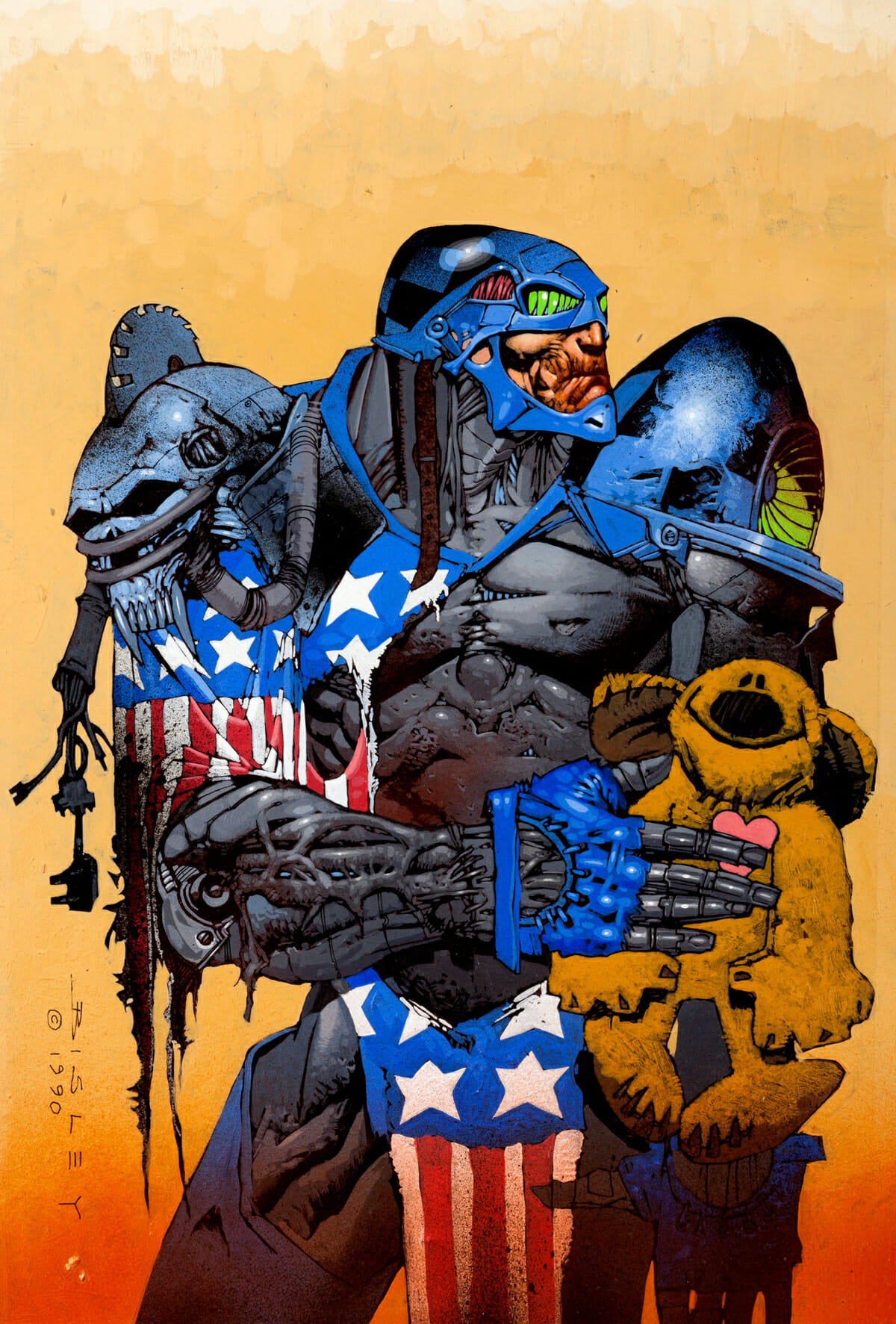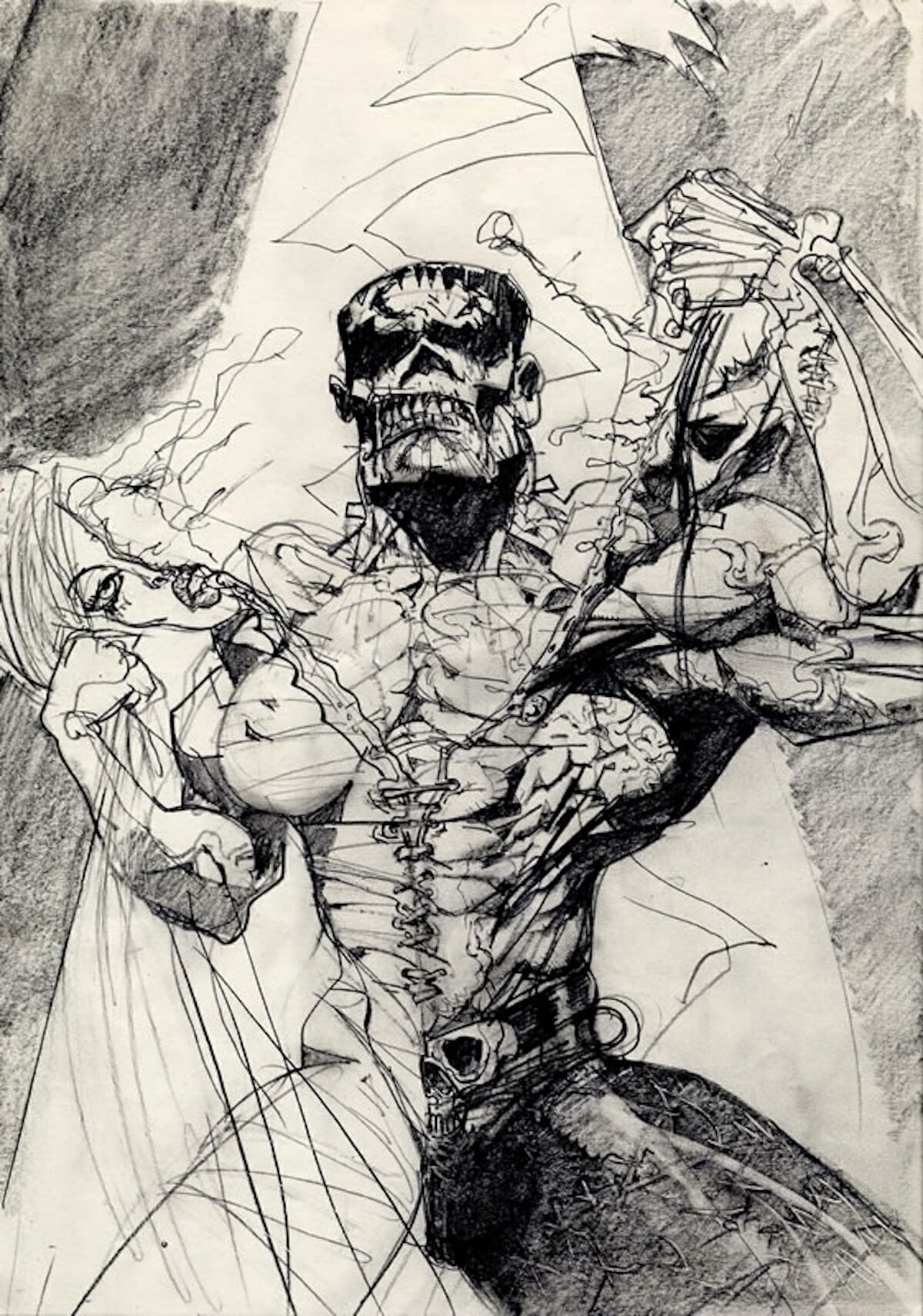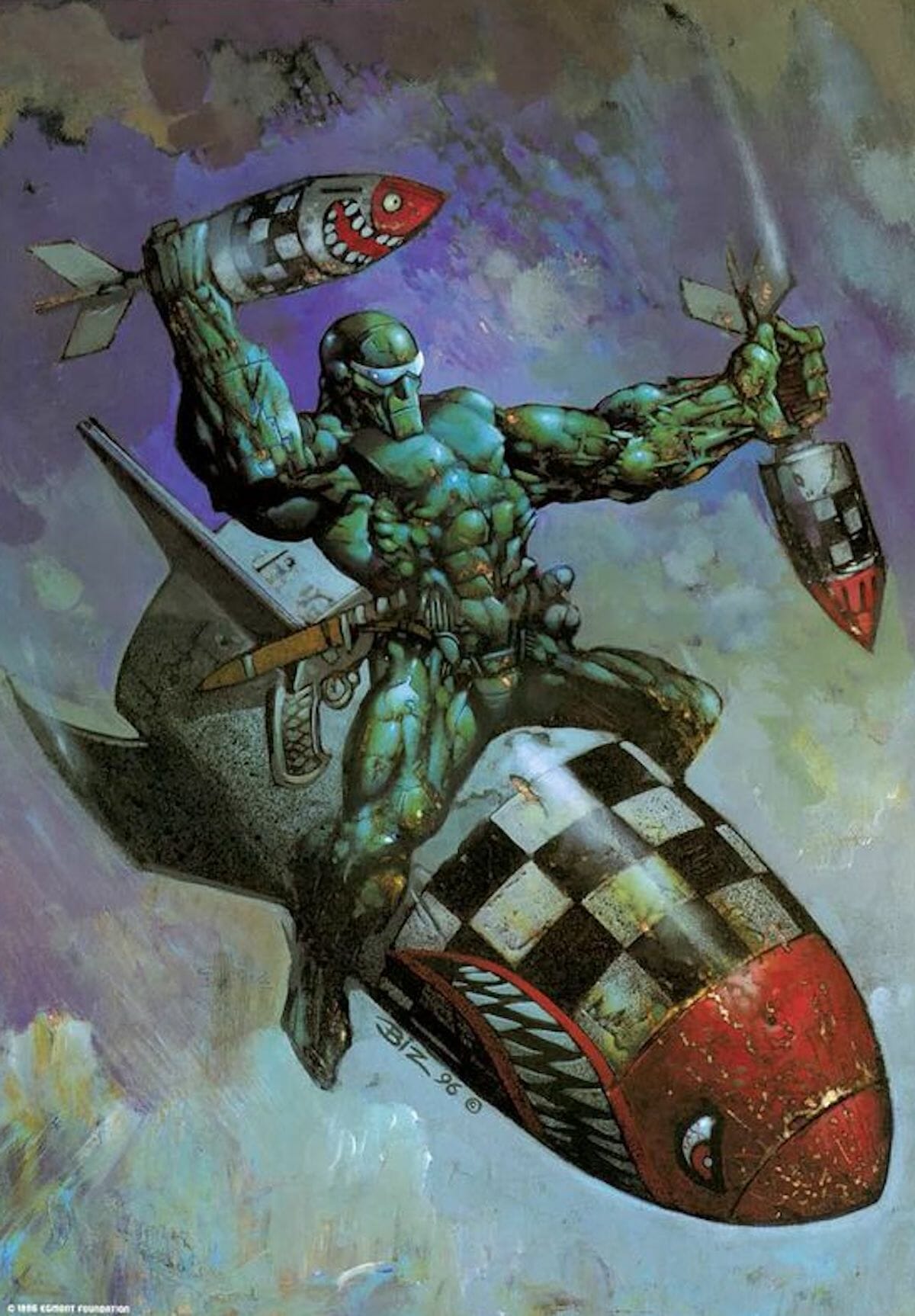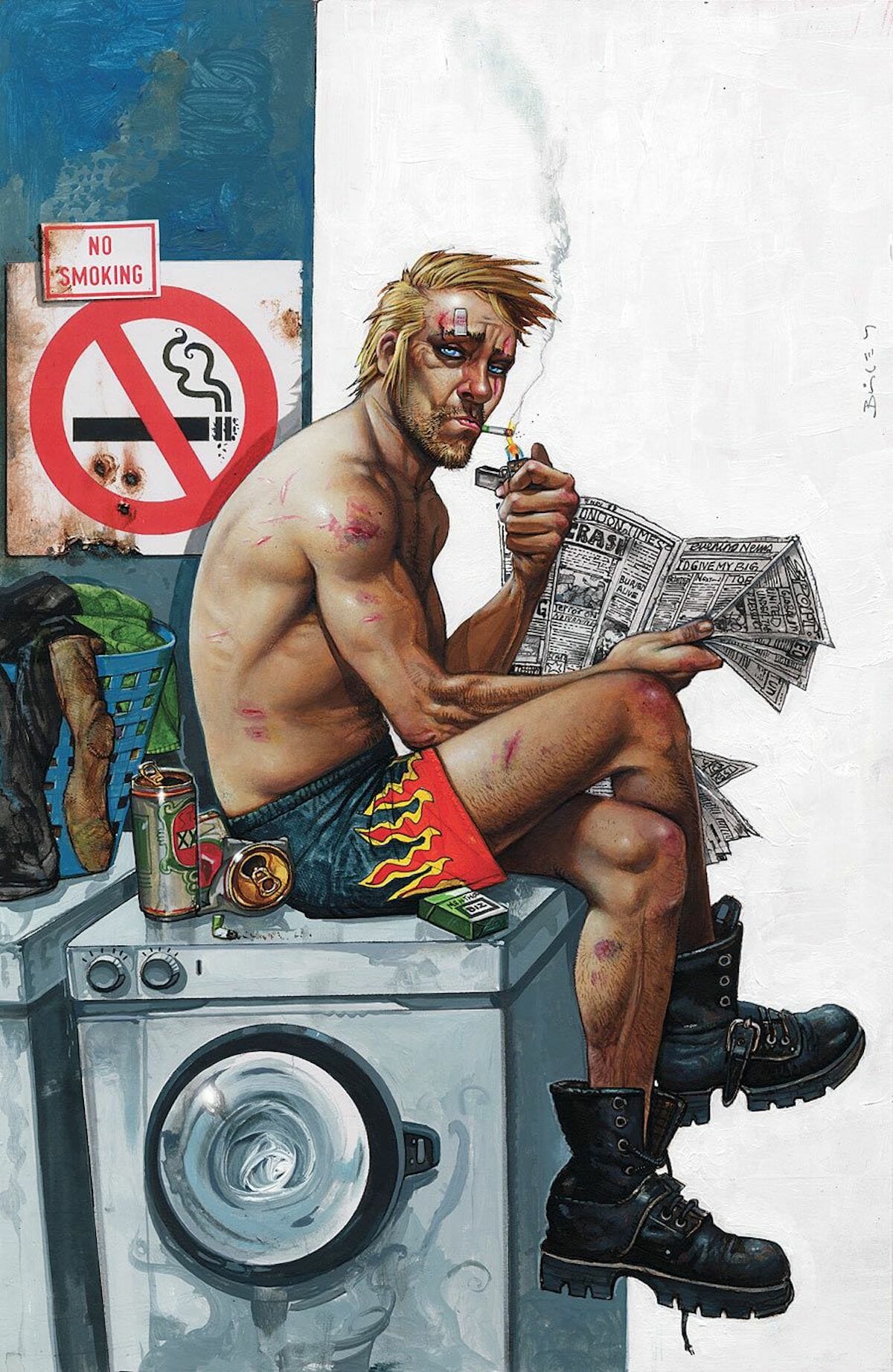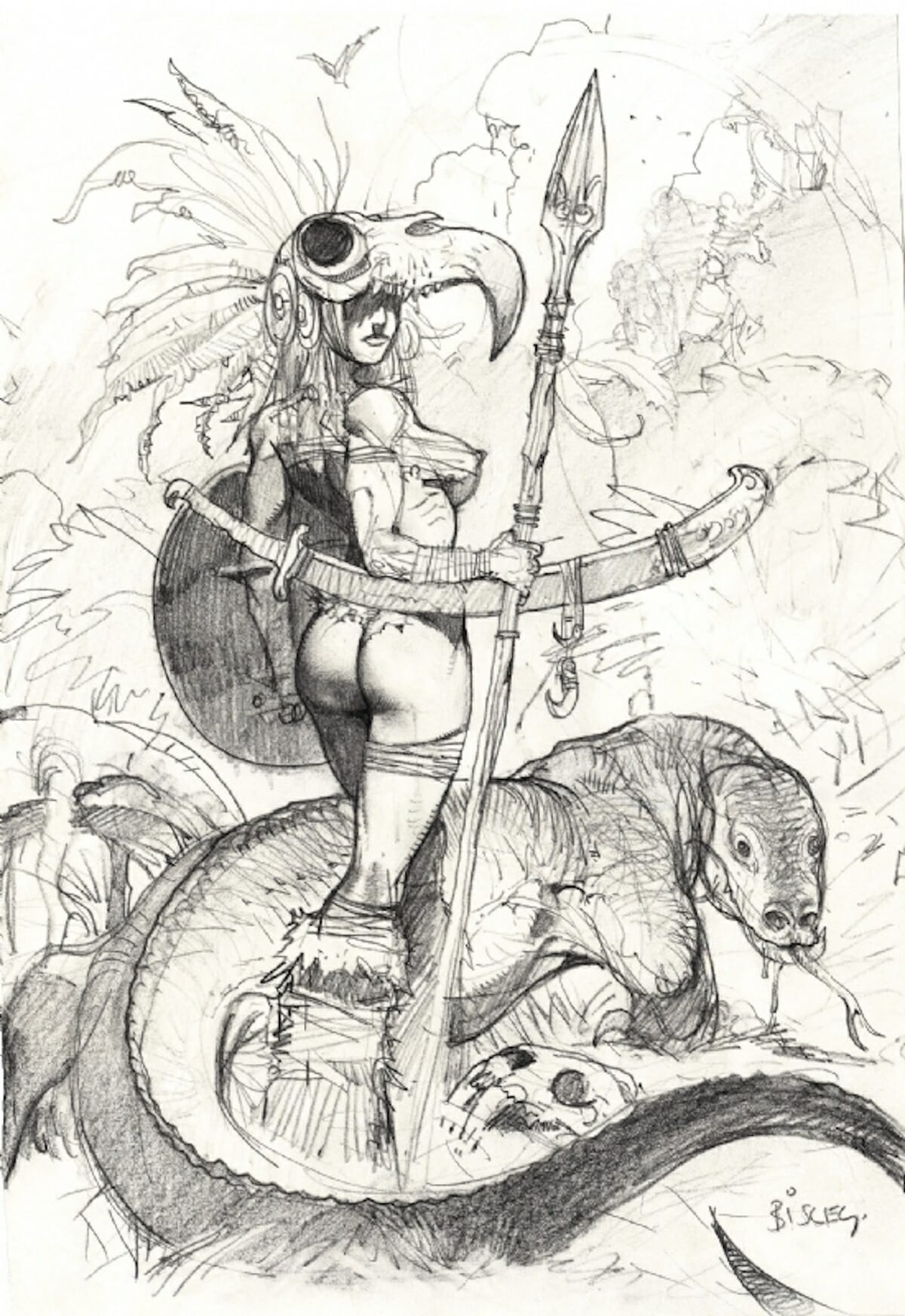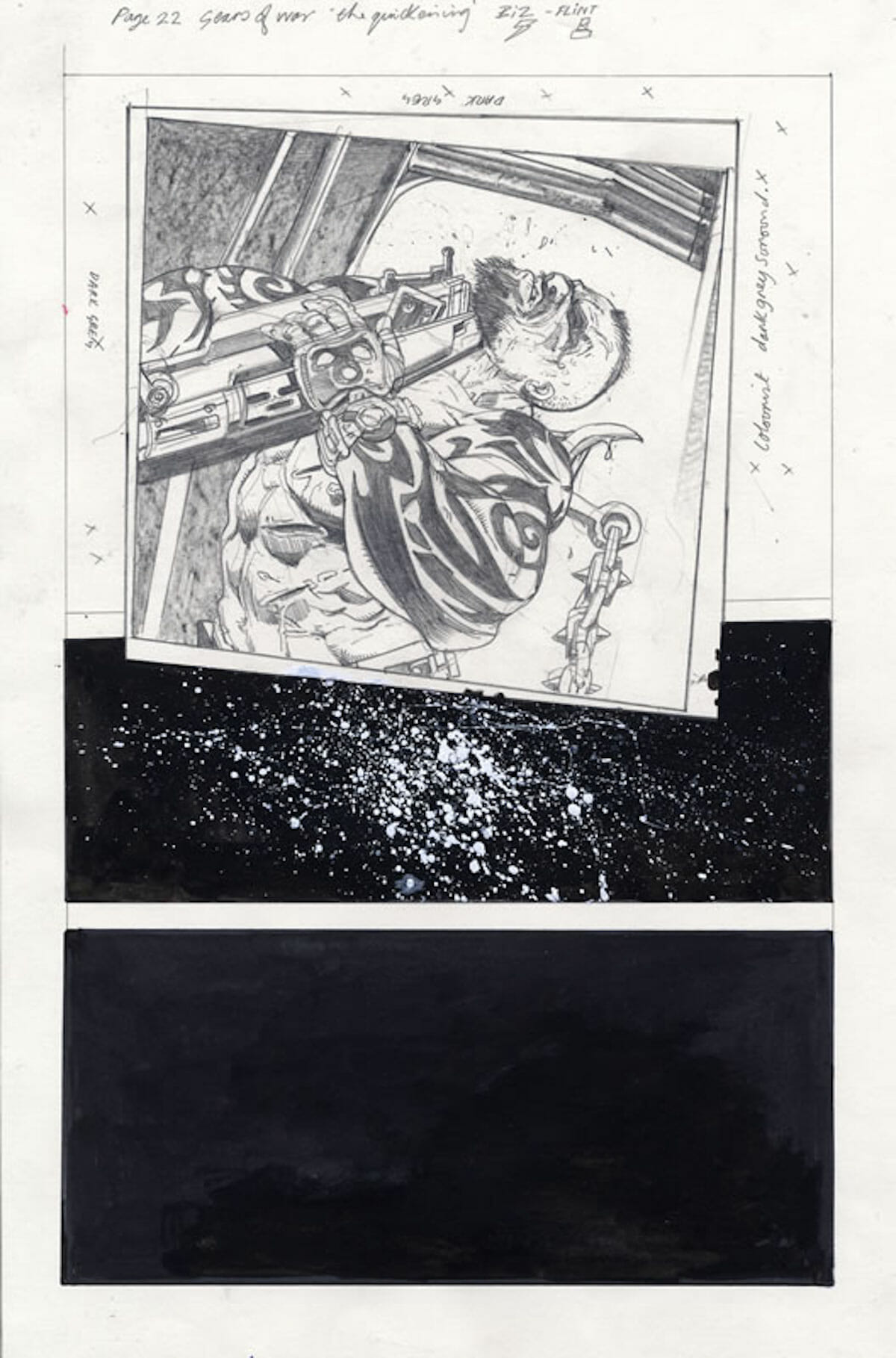Bisley’s comic book debut came in 1987, when he relaunched ABC Warriors with series creator Pat Mills for 2000 AD. Bisley was actually the reason the strip was revived after nine years; as the story goes, Mills had chanced upon an illustration Bisley had drawn of a robot holding a baby via a mutual acquaintance, and that one image alone convinced him it was time to revisit the idea of the all-robot army of soldiers and update them for a new generation.
Bisley’s ABC Warriors artwork was frenetic, ignoring years of conventional wisdom about what makes comic book art “work” properly in favor of an unrestrained dynamism and wild energy that felt like a previously unimagined combination of heavy metal album covers, the rock n roll eroticism of Heavy Metal magazine, and a glimpse at the energetic and bold cartooning styles that would come to dominate comic books in the 1990s. (For my money, you can see glimpses of both the Image Comics style of Jim Lee and Rob Liefeld in Bisley’s early black-and-white work, as well as the fourth-wall-breaking asides of Tank Girl creator Jamie Hewlett.) He was and still is — perhaps unsurprisingly — an immediate hit with readers.
If Bisley’s ABC Warriors was something that made people sit up and take notice, his next collaboration with Mills, 1989’s Slaine: The Horned God, was work that influenced a generation of British comic book artists — or perhaps artists as a whole — and made Bisley’s reputation span internationally, bringing his work to the U.S. and beyond. The Horned God was an expansion of another long-running serial in 2000 AD, but one that’s the very opposite of ABC Warriors in a number of ways; whereas ABC is a science fiction war story with robots as the central characters, Slaine is a fantasy series centering around a Celtic counterpart to Conan the Barbarian, with a twist of two — namely, an occasional tendency towards time travel, and the fact that Conan “warps,” with a grotesque Hulk-esque ability to transform into a monster during battle.
What makes The Horned God truly memorable, however, is Bisley’s artwork for the serial. Creating fully-painted sequential art for the first time, The Horned God showcased a surprising debt owed to Frank Frazetta and the pulp masters of the bygone era, with lush figures that looked as if they’d stepped directly from the background of Death Dealer or any other classic ‘70s genre painting, and exquisite backgrounds that felt more fully-realized than anything Bisley had then offered to date.
Arriving at a period where 2000 AD —and British comics in general — was slowly coming out of a history of single-color comic strips, The Horned God was a breathtaking leap into the possibilities offered by full color storytelling, as if cinema had gone straight from 1902’s A Trip to The Moon to Lawrence of Arabia in one step. The impact was felt immediately, with Bisley’s style being imitated by the up-and-coming generation of artists to varying degrees of success, leading to a period of British comics not-so-fondly remembered by readers as one where less talented artists created indistinct, over-worked pages of varying shades of brown in the hopes of coming up with something close to the vibrancy and dynamism that Bisley makes look effortless.
Slaine: The Horned God led, indirectly, to Bisley working in the U.S.; it was the reason he worked on the 1991 Batman/Judge Dredd: Judgment on Gotham special crossover issue, which brought him to the attention of DC Comics, resulting in his work on interiors for Lobo and Lobo’s Back and covers for Grant Morrison’s acclaimed Doom Patrol run.
With the level of visibility offered by the second biggest publisher in the western comics industry, it shouldn’t come as a surprise that Bisley really hit the big time after his DC work, with all manner of publishers offering countless opportunities — an opportunity that he took full advantage of, leading to an especially fun period of manic work for everyone from Glenn Danzig’s Verotik Comics to Dark Horse Comics, and with all number of publishers no longer in existence in between. Not everyone can boast of being published by Atomeka Press, Heavy Metal, Kitchen Sink Press and the comic book publishing arm of video game manufacturer Acclaim Entertainment, after all. But Bisley is, notably, not everyone by a long shot.
In recent years, Bisley’s work has been more rare in the larger public eye, unfortunately. But seeming to work primarily in commissions these days, his art still shows up in the most unexpected of places — issues of DC’s Hellblazer, covers for a number of different small independent publishers, illustrations for a Conan roleplaying game — but it always maintains a quality that outshines the best of the current industry: manic energy, a good sense of humor, a continual irreverence for his subject matter, and, at odds with all of that, a level of craftsmanship that is unmatched in everything he produces, whether in simple graphite on note paper or rich heaps of acrylic on canvas.
For all the visible influences on show in his work — being self-taught, it’s easy to recognize the influence of Frazetta or British comic artist Kevin O’Neill in Bisley’s work, as well as Richard Corben and Bill Sienkiewicz as their footprint is more fresh and less likely to have beaten out by academia — Bisley’s work is unmistakably his own, and comics as a whole are better for his choosing them as one of his primarily fields to work in.
